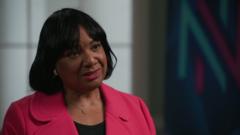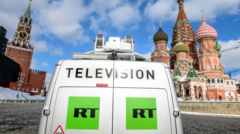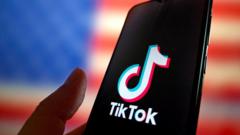Vice President Harris is gaining steam with voters on the economy, just as the economy itself is showing new signs of its strength.
The economy is the top issue for voters, according to many different polls. Polling agency Ipsos described it as “the single most important issue to Americans since April 2024” in a survey earlier this month.
Trump has long had a lead, first over President Biden, and then Harris when it came to the economy as an issue.
But that lead is now getting smaller.
Harris trailed Trump by 3 percent among American adults polled by Marist on which candidate would be better at handling the economy. Biden trailed Trump by 9 percent in the same poll conducted in June.
Harris also trailed Trump by 5 percent on the economy in Fox News poll, while Biden trailed Trump by 15 percent in a March survey.
It's not entirely clear why the gap is closing, though one reason is likely the replacement of Biden with Harris as the Democratic candidate.
While both Biden and Harris would be tied to their administration's record on the economy, Harris has proven to be a stronger messenger than Biden on a host of issues and has excited Democrats and independents in a way the current president did not.
While Biden struggled in his July debate with Trump, which ended up pushing him out of the race, Harris was widely seen as defeating Trump in her debate against the ex-president earlier this year.
There are also real economic factors that could be benefitting Harris.
Inflation has fallen sharply from its peak in June 2022, powering the stock market to a series of record highs in recent weeks and days.
The Federal Reserve this month slashed interest rates, a signal that it believes its fight against inflation has been successful. The move promises to lower borrowing costs for businesses and households, which has helped markets and could also be making consumers and workers feel better about their prospects.
Pollster Nate Silver on Friday noted that positive reviews to economic data had led to his economic index being boosted. "That helps Harris, too," wrote Silver, who now has Harris as a slight favorite in the presidential race.
Messaging by both Trump and Harris may also be a factor.
Seasoned pollster Frank Luntz observed after the presidential debate earlier this month that former President Trump’s messaging on the economy has been slipping, losing sight of the issue of affordability that is central to U.S. households.
“Every time they gave him a question on inflation, he moved it to some other issue. Every time they gave him a chance to statistically and factually differentiate himself from the vice president, he chose to make ad hominem attacks. He couldn’t stay on message,” he said on C-SPAN’s Washington Journal.
“The outcome of that was in almost every survey a 2-to-1 advantage for Harris,” Luntz said.
Despite Harris’ momentum, Trump is still leaning into the issue with a focus on fossil fuel and automotive production.
“We’ve lost fifty percent of our business over the period of 25 years. A lot of it went to Mexico, a lot of it went to China, went all over the world – Japan,” Trump said on the topic of auto production in an interview with journalist Sharyl Attkisson. “We’re going to get it back. We will be at a level that nobody thought possible with auto making.”
Following the economic shutdowns of the pandemic and two years of elevated inflation that have harassed wallets and pocketbooks, prices and the economy have been top of mind for American families and households, and the economy is likely to be the determinant issue in the 2024 election.
Whether families and households — especially those in swing states — are better off than they were four years ago is hard to say.
However, topline economic metrics following the profusion of state interventions in the economy have been unequivocally strong, and overall conditions are as close now to the Federal Reserve’s desired “soft landing” as they have been in the post-pandemic period.
Following impressive 3-percent growth in the second quarter that was confirmed by the Commerce Department on Thursday, White House National Economic Council Director Lael Brainard put out a laudatory statement on the cumulative economic growth over the course of the Biden administration.
“We learned this morning that the economy has grown by 3.2 percent per year during the Biden-Harris Administration — even stronger than previously estimated — and better than the first three years of the previous administration,” she said.
Brainard acknowledged that the administration has “more to do to lower costs for families.”
The personal consumption expenditures (PCE) price index fell to an annual increase of 2.2 percent, its lowest level in years that essentially marks the end of the post-pandemic inflation.
While employment conditions have tightened on workers, unemployment has remained low in absolute terms, ticking down to 4.2 percent in August with 142,000 jobs added to the economy. With people working more now than they were in the immediate aftermath of the pandemic, median household income increased for the first time since 2019.
Inflation-adjusted median household income came in at $80,610 in 2023, representing a 4-percent increase from the 2022 estimate of $77,540, according to the Census Bureau.
“Inflation has come way down [and] it did so without there being a recession, which has never happened before in the U.S. and virtually anywhere in the world. And now the unemployment rate has inched its way up to a level 4.2 [percent] that a lot of people thought ahead of time —that’s basically stable full employment. That’s where you’d want to stop,” Chicago Fed president Austan Goolsbee said in an interview last week.
“If you could just freeze it in place exactly where it is, you kind of would like to,” he emphasized.
Overproduction compulsions within the business cycle make such a freeze-frame scenario impossible, and Goolsbee acknowledged that there were some warning signs now in the economy.
The Fed has now started cutting interest rates, dropping them by a half-percent at the last meeting of their rate-setting committee. While rate cuts have coincided with a wider economic contraction in 2020, 2008 and 2001, the trillions in economic stimulus sent out by the government during the pandemic may interfere with this coincidence during the current stimulative cycle.















 English (US) ·
English (US) ·